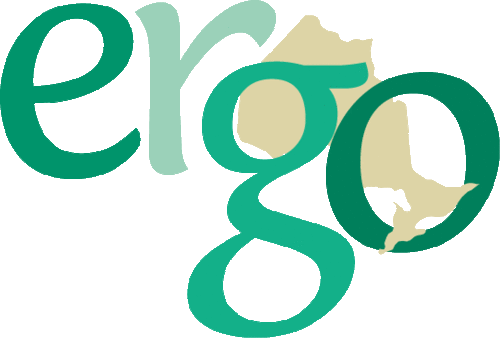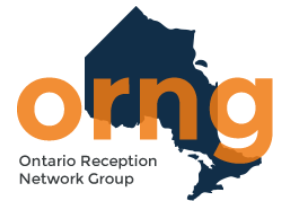
We collect basic website visitor information on this website and store it in cookies. We also utilize Google Analytics to track page view information to assist us in improving our website.

By: Kimiko Shibata, ESL/ELD Resource Teacher (K-8), WRDSB
On March 13, 2020, on the Friday before March Break, educators received an email telling us that all schools in Ontario would be closed for three weeks. We sent our students home at the end of the day with their indoor shoes, emptied out desks, and went home for what most of us thought would only be a few weeks. Little did we know that our lives were going to change drastically over the next several months.
Once we got word that our schools would be moving to emergency distance learning, staff swung into action, trying to make contact with every family at our schools to figure out who had reliable internet access, who needed paper copies of work to complete at home, and who might need technology to access online learning.
This was an especially challenging time for many families, including those who had recently arrived in the country. Some students had arrived at our schools just days before March Break, and many were scared and confused. Some did not yet know how to access necessary community supports, including food, clothing, and healthcare.
Some of the families with whom I was working had lived through traumatic experiences such as famine and war before coming to Canada. They were understandably upset by the empty shelves in grocery stores and shortages of basic supplies such as canned goods and paper hygiene products. Many expressed fear about leaving their homes or riding the bus to access the Food Bank, or nutrition support programs. Some were scared to answer their phones, especially if phone numbers were blocked or they didn’t recognize the phone number.
Our school board, like many others in the province, prioritized relationships and connection during school closures, and this made all the difference in our ability to recognize and meet the basic needs of some of our most vulnerable learners and their families. Frequent check-ins with our families helped to keep the lines of connection open and to proactively address needs.
School settlement workers and interpreters diligently worked around the clock with ESL and classroom educators to help us get in touch with our families, address needs, and connect students and families to necessary supports in our community. Family and Children’s Services workers also helped to meet the needs of some of our more vulnerable families during school closures. A few of our interpreters used innovative methods to try to get through to families, including using social media networks to reach out to families who were not answering their phones. Many school staff volunteered to do drop-offs of clothing, food, and school/art supplies to students. The manner in which everyone pulled together to support our families in need was inspiring.
Across the province emergency distance learning ran from March until the end of June 2020. School staff did their best to get technology out to the families that needed it, and to provide nurturing, challenging, and developmentally appropriate online learning for our students while also caring for our own families and loved ones at home. Connection and student wellbeing were at the forefront of all planning and interactions with our students and their families. The hours were long and the learning curve was steep, as we all figured out new methods to connect, teach, and learn.
Engagement with online learning was a challenge for many families, especially those for whom the technology was brand new. For some families who had lived in refugee camps before coming to Canada, this was their first time using any sort of computer. I spent many hours on the phone each day with parents and students, helping to troubleshoot everything from how to charge an iPad to logging into a Chromebook and learning how to access various learning platforms and turn in online assignments. Many families were easily frustrated by the new technology and virtual classroom platforms, especially when students from the same family were using different platforms and websites for their classes. It was also not uncommon for multiple students and parents in one home to be sharing only one piece of technology, which often made scheduling synchronous sessions for multiple teachers quite challenging. While other families expressed concerns about synchronous learning, and were worried about their children or their homes being displayed on the internet or recordings made of their children. This was of particular concern for some of our families with refugee backgrounds.
In September 2020, we had roughly 1500 English Language Learners enrolled in our full distance learning program. Many of us were shocked to find out that the number of students who had chosen distance learning was so high, especially among our newcomer populations with refugee backgrounds and those living in lower-income neighbourhoods. Racialized communities that often face greater barriers to accessing health care are disproportionately impacted by COVID-19, and some families were scared that they wouldn’t be able to get the healthcare they would need if their children were infected. Some families from areas of conflict who had lived through trauma were afraid to leave their homes or send their children to school. Some of our newcomer students live in multigenerational homes with household members who are at higher risk because of their age or preexisting health conditions, and this was a deciding factor in their chosen mode of schooling.
By the end of September, an additional 3,000 elementary students indicated that they would like to move to the Distance Learning program. This brought us to approximately 12,000 students enrolled in the Elementary Distance Learning Program in the WRDSB.
We know that this pandemic has deepened and exposed existing socio-economic and racial inequalities that exist in our communities, and many of us are concerned about gaps in education getting wider, especially for our newcomer students with limited prior schooling. ESL teachers are working hard to make online learning as accessible as possible for our students, including helping our classroom teaching partners in both distance learning and blended learning environments to leverage technology and intentional teaching and assessment strategies to support the success of our culturally and linguistically diverse learners.
Encouraging students to leverage their first language skills to access curriculum has made a huge difference to their understanding, participation and engagement in online learning. The Google Translate Chrome Extension has been used in the Chrome Browser to translate whole web pages, including classroom and assignment details in a Google Classroom. This has allowed our linguistically diverse students and their families to use their home language to access course materials, information, and instructions, and also to translate webpages for content area research projects. The "Slides Translator" add-on for Google Slides has also been helpful for students who can use their home language literacy skills to access grade level content and activity instructions. It has also been advantageous to share instructions and front-load important concepts and information in a Google Doc, so that material can be translated by the student using the Translate feature of Google Docs. Many of our students have also enjoyed reading texts online in their home languages, using sites such as:
Using visuals to support comprehension has made content more accessible and comprehensible for ALL students in distance learning programs, but is especially useful for our ELLs. Some of our teachers have been experimenting with the Picture Word Inductive Model (PWIM) to help students develop content vocabulary and an understanding of sentence structure through the use of teacher-labelled pictures on slideshows and virtual whiteboards.

Many of our early STEP students have found success in communicating ideas visually using slideshows, visual creation apps such as PicCollage, or on a collaborative jamboard.



Students have also benefited from creating and using visual word walls for content areas to help them remember important content area vocabulary. Some of our students from the same linguistic and cultural group working at different STEPs were able to co-create visual dual-language vocabulary charts, to help scaffold each others’ content area writing in culturally relevant ways.

The Wordsift website has also been helpful in pulling up visuals to help our students to understand and use content area vocabulary. In many cases, the students themselves have been the creators of the visuals, or have located them using royalty-free image searches on sites such as Pixabay, Flaticon or The Noun Project.



Students have made good use of the Voice Typing tool in Google Docs, as well as some of the tools from Google Read and Write, such as the picture dictionary, visual vocabulary list builder, text-to-speech and speech-to-text functions.

Some teachers have also used sites such as Rewordify to change the complexity level of certain texts to make content more accessible for students at early STEP levels.

The last several months have definitely been challenging for educators, students, and their families… but it has also shown just how deeply school staff and our community partners care about students. I have been moved by the passion and compassion educators bring to their work with students and their families. Everyday, educators demonstrate their commitment to student wellness and academic success, and I am proud to be a part of it.

Kimiko Shibata has been an educator in childcare settings, as well as a classroom teacher in Kindergarten, Primary, and Junior divisions. She holds ESL Specialist Qualifications and Special Education qualifications and is currently an ESL/ELD Resource Teacher for K-8 for the WRDSB. She is married to an IT professional and is the mother of an amazing small human. She can be found on Twitter: @ESL_fairy. Her website can be found at: https://teachers.wrdsb.ca/eslresources/

